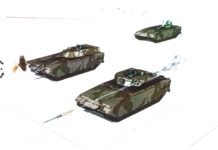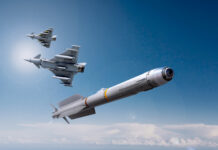In September 2018, when a programme agreement was signed between the German procurement authority BAAINBw and the Norwegian procurement agency Forsvarsmateriell, there was confidence that a supply contract could be concluded before the end of 2019.
However, this expectation has not been realised. A year earlier, in August 2017, Norway and Germany had signed a landmark intergovernmental agreement. In October 2017, the German industrial partner thyssenkrupp Marine Systems assumed that the contract would be in place by the end of 2019.
From the limited amount of information available, it can be concluded that the effort and time required to reach agreement on the operational requirements for the duration of the programme had been underestimated – or in other words, being able to adapt to the threat and technological developments in order to enable the necessary capability adjustments over the next 30 years. However, there were already different views on this.
In an interview with our sister journal “MarineForum”, RADM Nils Andreas Stensønes, Inspector of the Royal Norwegian Navy, put it like this: “Joint procurement means harmonising requirements to meet both German and Norwegian needs.” Put another way, with the signing of the intergovernmental and programme agreements, both navies faced roughly the same situation as newly-weds do before moving into a new home, namely being confronted with making sustainable decisions against the backdrop of previous social and living habits. It is a matter of systemic decisions (e.g. energy and furnishings) all the way to the supplier (e.g. the kitchen), which prolong the process and test the partnership.
Any fundamental differences in opinion seem to have been resolved over time – a compromise between signature reduction (stealth) and payload has been found, as has been the case with the application of certification agreements; according to reports from British defence analysts Shephard, the Naval Submarine Code will be applied. Compromises have also been found on other features, such as rescue equipment, the one versus two-chamber system, the command and weapon deployment system, armament, sensors, but details of these have not yet been made public, for good reasons. However, despite progress made so far, the programme is currently at a standstill.
According to Norwegian media reports in October 2019, thyssenkrupp Marine Systems is responsible for the delay: “The offer from the German supplier was simply not good enough,” the Norwegian online newspaper “Aldrimer.no” reported on 7 October. Other Norwegian reports quoted the price. These reports are partly based on information from the procurement authority, according to which the supplier was to submit an updated offer by the end of July 2019. Due to the upcoming budget discussions in the Norwegian Parliament, the issue has become highly contentious.
Numbers Games
The Norwegian Procurement Authority foresees a cost ceiling of slightly more than €3.6Bn for the four Norwegian submarines, which includes VAT, a risk margin and implementation costs. In an earlier document (the 2017 issue of “Future Procurements in the Norwegian Defence Sector 2017 – 2025”), slightly under €1.3Bn was earmarked for the 6346 project “New Norwegian Submarine Capability” over the period 2018 to 2025.
The procurement, according to Forsvarsmateriell, is expected to take more than ten years, with the first submarine expected about seven years after the order has been placed with the remaining submarines to follow at annual intervals. When the Memorandum of Understanding was signed in February 2017, this was planned from 2025 – and was published as such. Germany is taking submarines number three and number six in the series, which is to be completed by 2032, according to a statement Forsvarsmateriell made at the time.
Given that the contract has still not been signed, a delay is inevitable. Norwegian media outlets report, citing the Norwegian MoD: “Delivery of the first submarine was planned for the end of 2026. This schedule is likely to be affected by the current situation and a new schedule will be determined by the upcoming contract negotiations.” In an interview with T2, a Norwegian television station, a staff officer familiar with the submarine project admitted that the contract would not be signed until later in 2020. T2 mentioned delays of several years compared to the original plan.
Oslo is already considering keeping the ULA class submarines in service for a longer period. In any case, the budget for 2017 – 2025 had already provided up to €130M for decommissioning measures. As life-extending measures for the four remaining ULA submarines, the projects P6345 (updating the ULA class), and P6370 (the interim solution ULA class), will be launched for an additional €51M.
In Norway, submarines are considered a strategic defence capability. In the medium-term planning 2021 – 2024 (roughly corresponding to the capability profile of the German Armed Forces), which was presented to parliament by the Inspector General of the Norwegian Armed Forces in October 2019 and presented to the public, at least four submarines are accommodated in each of the four options examined, while the two more demanding scenarios, which are very costly in terms of defence policy, involve five submarines each.
Comprehensive Norwegian Partnership
According to the Norwegian journal “Teknisk Ukeblad”, the Norwegian Parliament has set a balanced industrial cooperation and market access for the Norwegian defence industry as conditions to be met prior to the signing of contracts.
Some of this has already been carried out in advance on the German side. It was agreed to establish maintenance and repair capacities in Bergen, Norway. There are plans by the two navies for joint training, personnel deployment and life cycle management of the future U212CD project (common design, i.e. everything – with the exception of encryption technology – is largely identical). The Norwegian company, Kongsberg is to become the supplier of a naval strike missile (NSM) to be used by both navies. The Norwegian company is also involved in the development of IDAS (Interactive Defence and Attack System for Submarines) – a missile system designed primarily for the self-defence of submarines against airborne threats.
In addition, Kongsberg, thyssenkrupp Marine Systems and its subsidiary ATLAS ELEKTRONIK have established the joint venture kta Naval Systems in October 2017. This joint venture will be responsible for the development, production and maintenance of command and weapon deployment systems (Combat Systems). The company is based in Kongsberg, Norway, with a branch office in Bremen. Kongsberg and ATLAS ELEKTRONIK are each contributing 50% of the joint venture’s equity.
Hopefully, this joint project, which was launched with great enthusiasm, will not founder at this stage. For thyssenkrupp Marine Systems, U212CD was intended to set new standards in submarine construction with which the company wanted to profile itself as a leading systems house for conventional submarines, ready to develop the standards for the future, a company representative told an international audience at SUBCON 2019. After tkMS failed to secure a deal in Australia, U212CD is a lifeline for thyssenkrupp Marine Systems.
However, there is more than just the reputation of the company at stake. For the past 60 years, Norwegian submarines have exclusively been made in Germany. It is no coincidence that Norway has chosen Germany as its partner for a joint submarine project, despite negative experiences in the past. In this respect, it also needs political impetus. In 2017, the German MoD commented on the Norwegian decision on the “comprehensive strategic partnership” with Germany: “The Norwegian decision will also help to secure a future-oriented key technology for the next decades in Germany and to further develop it in close cooperation with our Norwegian partner.” In this respect, it is time for the “Berlin in-laws” to play their part.
Hans-Uwe Mergener











